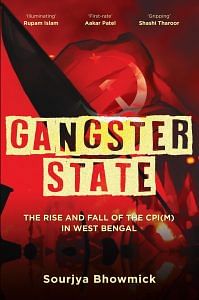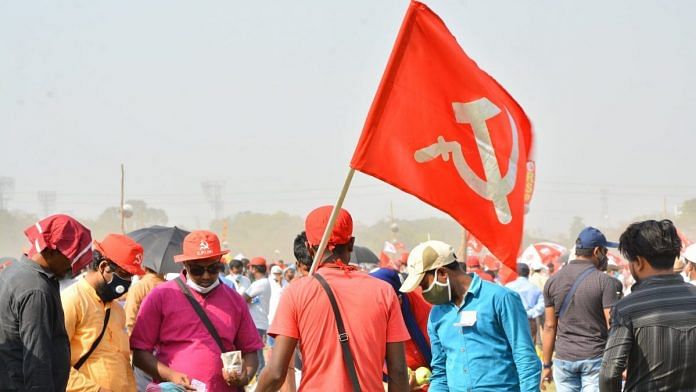What is to be done? This is the burning question for the CPI(M) right now. Should there be a purge? Should the entire top leadership retire? Seeing the same old leaders continue as if Bengal was still in the pre-liberalization era had tired the public. These leaders, in the winter of their career, are unable to grow out of their constricted understanding of life in the twenty-first century.
These old faces also constantly reminded the people of Bengal of the thirty-four-year-long semi-Stalinist regime that had ravaged their state. Younger representatives brought up over the course of Bengal’s mass movements seemed a far better option. In 2015, the CPI(M) Kolkata Plenum decided that one-third of the members of all committees should be below the age of thirty five. As of 2020, many in this age group have found a place in the committees. These new members had spent crucial years of their political careers in the opposition, and not many have heard of them. Were there any movements to reckon with under the command of the old and the new leaders? When the state leadership participates in party programmes and movements, it gets recognition because of the choreographed footfall. The CPI(M), which once went door to door to establish mass contact, now had no access to the houses of the locals. There were no local social movements at the ward level. Out of power, workers and leaders of the local units devoted more time to their families, businesses and jobs. During the work week, they met in the evenings, and on weekends they got together to discuss national politics, media and WhatsApp news. For these rudderless leaders, organizing a movement was asking for too much. The only connection that remained with the people were the two minutes of face time during the district committee collection drive, which they were obligated to carry out.
In late 2014, the CPI(M) made a distinct organizational change to their party structure. The Party merged the local and zonal committees into the area committee. This reform was necessary in order to cut the flab in the organization and shunt the fence-sitters. But party members say that it has had a boomerang effect. Earlier, an average of fifty CPI(M) members ran the show, and now the number has nearly halved. Leaders did not include many deserving candidates in the area committees as they were not affiliated with the dominant group. Those snubbed members would either sit at home now or look for greener pastures.
Also read: Bengal woke up and chose violence at birth. TMC is no exception to that norm
Rural Bengal had once been the CPI(M)’s stronghold. This is where they had raced ahead against their opponents during the 1980s and the 1990s. They were the poor farmers’ party. The 1978 reforms implemented by the CPI(M)-led government, Operation Barga, had changed the lives of many peasants, reducing poverty and improving lives. They had distributed the surplus land among the poor, landless peasants and weakened the domination of landlords in rural Bengal. But this policy success of the CPI(M) was short-lived. Many critics, including party workers, later alleged that only party supporters got the land titles. The All India Kisan Sabha (AIKS), the peasant’s wing of the CPI(M), led the movement and controlled the process. Soon, these AIKS leaders became the new zamindars of the state. ‘They became the borolok chashi’s (rich farmers’) bloc in Bengal. The gigantic houses they built in their villages indicate who had benefited the most from the Panchayati Raj and land reforms. Do you expect them to lead movements in the villages now?’ an active party member said when Rajat Lahiri [Presidency College scholar who joined its student wing, the Students’ Federation of India, and then the party] asked, curious, why the CPI(M) could not achieve a turnaround in the villages.
During all his visits to the districts during elections, Rajat found that people shared a common narrative about local politics. They admitted that the TMC was corrupt but agreed that the party had done a lot of development work too. For them, the CPI(M) was less corrupt as their workers did not take bribes, but their leaders had made enough money. Moreover, they never undertook any significant development measures for the state. Rural Bengal no longer trusted the CPI(M). They had witnessed the TMC’s focus on development and the allure of religious pride cultivated by the BJP. For them, these two seemed to be the only choices.
The CPI(M) faces numerous challenges. But what were the solutions? When Rajat spoke to party supporters and members, he realized that although they were aware of the challenges, they had no clarity on how to overcome them. The biggest problem was the bureaucratic attitude that suffocated the Party. Democratic centralism, which had once led to efficiency, was now a burden leading to a lack of innovation and reform in the party. Politics was now a social media and data war. And the CPI(M) had entered this arena much later than the BJP and the Congress. Today the voter is also an audience member, and political parties can manufacture his or her political choice. The BJP and the TMC had become proficient in this scientific area-based audience targeting through their social media army. The CPI(M) was still grappling with the concept, unable to break out of their branch meetings, minutes and deliberations. The representation of the youth in the Party during 2021 marked only a symbolic change.
The key decision-makers were still the old, orthodox members who had no connection with the everchanging class realities prevalent in Bengal’s districts and villages. This conservatism was making the CPI(M) an urban party, which finds resonance only in the colleges of the city, explained a state committee member. He also pointed out that those below the age of sixty in the CPI(M) had spent most of their political lives seeing the Party in power. Leading, organizing and participating in popular movements had not been a challenge when the Party’s power was uncontested. Now they preferred to sit at home. ‘Colourful anti-CAA, anti-NRC posters or singing “Bella Ciao” at Nandan or eating beef to protest against a beef ban in the middle of the road makes little sense. It is not the end. We need issue-based local movements where people can see us. This is what the people knew the CPI(M) for,’ added the state committee leader. ‘We need to replace the old faces from across the board. People associate them with our follies. Fresh new faces should be the ones doing mass outreach.’
The problems with the CPI(M) are plenty: Old, conformist leadership, an inactive cadre base who have nothing new to offer to a consumerist, aspirational society. The solution may be to bring forward young people wherever possible, organize local issue-based movements and embrace the realities of religion and consumerism, which are integral to India. What if they had changed their flag? What if they had changed the name of the party? What if pressure from the young had been successful in removing the entire top leadership? Rajat often wonders. Would that have meant a complete erasure of its existence or a rebirth? India needs a political party like the CPI(M).
Also read: 2021 election has ended the Bengal exceptionalism. It’s now seeing American-style management
In Bengal, a team of young Left workers, under the banner of Red Volunteers, took to the streets immediately after the election was over to tackle the second wave of the pandemic. These hundreds of volunteers, through a strong social media network, have provided oxygen cylinders and concentrators as well as medicines and connected Covid patients with ambulance services. They have acted as food and grocery delivery personnel for thousands of mild-Covid patients isolating at home. They now know that the people will not bless them with votes, and yet they go on helping, day and night. They are the ones who speak about workers’ rights, farmers’ rights and a genuine welfare state free from the clutches of corporatization. The kind of change that Buddhadeb Bhattacharjee should have dabbled in.
Many party members blame him and his failed experiments with ideas for the demise of the CPI(M) in Bengal. But he remains a leader respected by the ordinary people and party workers. Bhattacharjee’s ill health had mostly confined him to his small flat, while regular visits to the hospital became routine, rendering him unable to re-energize his cadres. After being tested positive for Covid in May 2021, his condition deteriorated, and he was hospitalized once again.
 This excerpt from ‘Gangster State: The Rise and Fall of the CPI(M) in West Bengal’ by Sourjya Bhowmick has been published with permission from Pan Macmillan.
This excerpt from ‘Gangster State: The Rise and Fall of the CPI(M) in West Bengal’ by Sourjya Bhowmick has been published with permission from Pan Macmillan.



